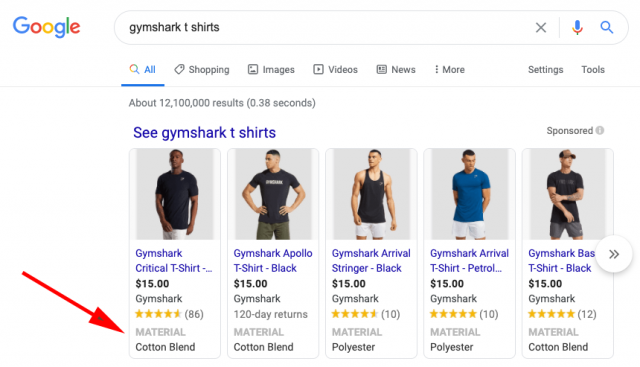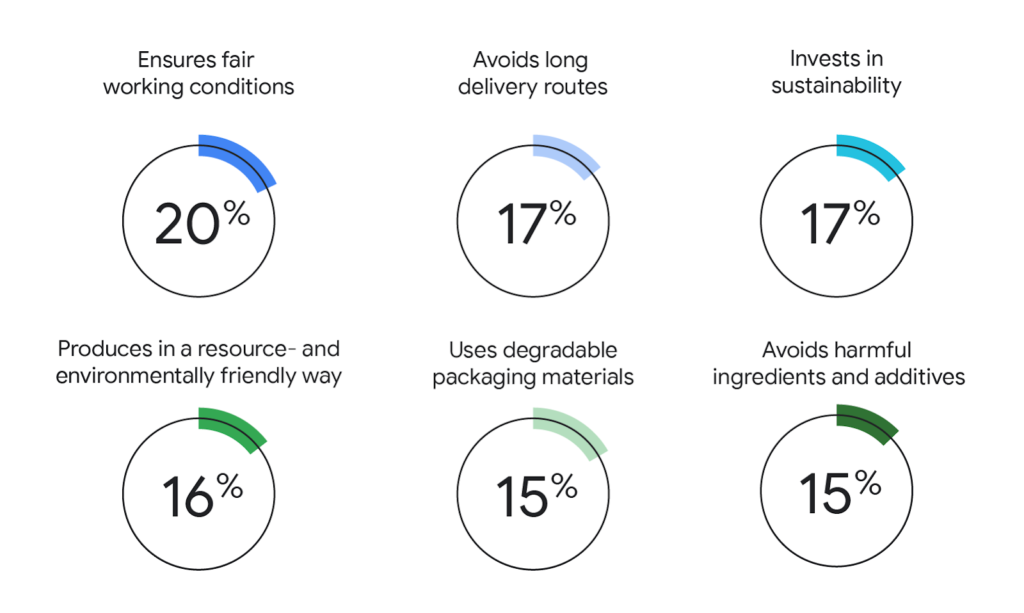Sustainability is no longer a ‘nice to have’ but an imperative. Lockdown brought with it increased awareness of the planet as 81% of consumers became more concerned about environmental issues. The panic set into our bones over the destruction we are knowingly causing to our world by the likes of David Attenborough and Greta Thunberg has snowballed.
Its impact on advertising is clear to see: Microsoft revealed they’d seen more searches for things such as organic cleaning products and electric cars during the pandemic. Veganism is no longer viewed as a fad and its industry is growing steadily in Search; “alternative to single-use” search terms have grown 137% when comparing 2019-20 with 2017-18. Google even has a non-profit grant scheme which gives charities an advertising budget of $10,000 a month.
In fact, British consumers would be willing to pay £3,654 more a year for eco-friendly household goods and services. There’s a huge calling for brands to be more sustainable, but is it possible for businesses of all sizes to answer that call in 2020?
Carbon neutral targets
We see a lot of good intentions being laid out by the tech giants: Facebook and Google have both recently set their carbon neutral targets as well as Amazon who have gone further, investing $100 million in reforestation projects around the world.
On paper, big brands seem to be leading the way. But as the world continues to burn around us, something inherent in our habits needs to change before a real impact can be made. Using technology to transform the way we prioritise what’s important when we shop could be a key contributing factor in making sustainable products successful.
For instance, Google appeared to be trialling material labels on its sponsored shopping ads back in the summer. This was just another test which was spotted by hawk-eyed users but it showcased Google’s experimentation with making product materials prominent in the SERPs. Prioritising and highlighting the fabric of a garment simulates the same in-store experience of being able to touch a product and read its label. If sustainable shopping is important to searchers, displaying its origins is a great step in an environmentally-conscious direction.

Fast fashion
The booming fashion industry is just one area where more sustainability could be introduced. Currently, the industry is responsible for 8% of carbon emissions with textile production contributing more to climate change than international aviation and shipping combined.
Online clothes shopping is drastically on the rise too, with 86% of fashion purchases being made online in comparison to just 41% last year. The closure of physical stores has seen a big shift in consumer behaviour and the way we purchase clothing. As a result, we need to adapt to not only making online shopping easier but introducing initiatives which focus on sustainability.
A Google study stated that 55% of shoppers claimed sustainability was more important than value and quality. But, when this was compared against their buying behaviour, it showed sustainability on its own (59%) was substantially less important than value (84%), quality (84%) and style (83%). This gaping chasm between what users claim is important and what their habits show displays search’s inability to cater for their values. If sustainability is so high on their priority list, more can be done to shine a light on a product’s environmental impact.
Google argues that this research demonstrates that there’s a gap in the market for fashion brands who are “willing to innovate and provide transparency to engaged consumers around sustainability.” It can be argued that this vision can be applied to all industries and not just fashion. This idealism is bolstered by the fact 54% of adults feel joy when they do their bit for the environment and there is an eagerness, albeit a slightly naive one, to do more for the planet.
Whilst fast fashion is a significant opponent to a greener world, overhauling the entire way we approach purchasing products online is what’s needed.
What’s now expected of brands
Further Google data demonstrates how users expect brands to care about sustainability and social issues.
Once it was seen as novel for companies to do their bit for the environment – it was as though making their products out of recycled materials or contributing to a green charity made them ‘friendlier’. Today, things have moved past being voluntary acts of kindness. More than a third of customers demand businesses be more transparent about the sustainability of their products. In fact, 62% say that they cared about at least one sustainability aspect when purchasing online in 2020:

It’s clear that sustainability isn’t a hot topic which will fade into the background. As the net tightens on big tech transparency and the public demands more control over their user privacy, it won’t be long before they’re stomping their feet and boycotting brands which refuse to tow a sustainable line.
How to make your business fit
With an environmentally-conscious buyer at the forefront of new purchasing habits, how does your business adapt?
Firstly, you can ensure you’re doing all the moral things from a business-operations perspective: recycling where possible, reducing waste, ensuring fair working conditions and producing products in an environmentally-friendly way. These things need to be part of a bigger strategy as there’s lots of value in being social conscious – consumers choose brands based on how they align with their own core values.
There are lots of resources out there to show you how to adapt your business, slowly but surely, into being the best it can be.
When it comes to advertising, there are lots of ways you can ensure your business stands out for doing what’s right.
1. Showcase it in your ads
Just like Google’s material labels test (which may or may not become the future), making it easy for environmentally-conscious buyers to identify your product as sustainable will really set you apart. Whether you highlight the way everything is responsibly sourced in your text ads or simply label your materials in your shopping ads, every aspect makes you stand out for the right reasons.
2. Display your certifications
Make it quicker for people to identify your product as sustainability sourced through achieving certifications from trusted platforms.
For instance, an Energy Star or Fairtrade logo next to your products saves users a lot of time searching for whether you adhere to fair practises or not. It’s also added persuasion for the 55% of shoppers who claimed sustainability was the most important purchasing factor, but struggled to follow through on it.
3. Complete transparency
When people click through to your landing page, aim to be as transparent as possible about where your products came from. Avoid boring customers to tears with in-depth descriptions of your supply chains, but do make it easy for them to understand where everything is from, what’s been used and what the production processes are like.
By being transparent about your practices, potential customers are a lot more likely to trust your brand which goes a long way when it comes to purchasing decisions.
4. Communicate your beliefs
If you really believe in sustainability and making positive changes for the planet, tell your customers that. Build your sustainability beliefs into your dialogue and ask for their feedback. Use your social media pages to show what your working conditions are like; create content around the way you’ve implemented sustainable supply chains; engage with users about your future plans.
Whilst sustainable practices are something we all should be aiming for, not many people are doing so. Shouting about it now will position your brand as an industry leader.
5. Be specific
Rather than being wishy-washy and just telling people your products are sustainable, be specific with the details. Tell customers how your product will help them limit their carbon emissions and by exactly how much; tell them what the environmental impact of swapping to your product would be. People respond well to specifics and it will help your brand stick in their minds for longer. Plus, it’ll help make them feel great about doing their bit for the environment.
Sustaining sustainability
Building in sustainable practises and learning how to adapt your advertising to showcase that now can have a huge impact on your business. If you’re a non-profit organisation, be sure to apply for Google’s advertising grant to get your business in front of thousands of users for free.
There’s a real hunger amongst searchers for sustainable products and by catering to it when industry-related searches are rife, you’ll ensure you get a steady stream of environmentally-conscious buyers – both at this moment and for as long as this planet is alive.




